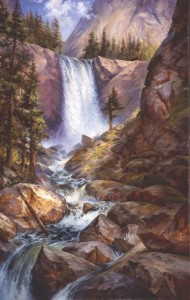In order to collect art intelligently, you have to master two basic skills. The first is being able to effectively research, evaluate and buy every single work of art that attracts you. The second is being able to choose each individual work of art in such a way as to form a meaningful grouping, a practice more commonly known as collecting.
If you’re like most people, you know how to buy art on a piece-by-piece basis, but may not be accomplished at formulating a plan for making multiple acquisitions over time and building an art collection. You can find art you like just about anywhere you look, with an incredible variety of subject matters, mediums, and price ranges, but having this vast variety to choose from can be confusing as well as intimidating. So, how do you wade through it all and decide what direction to go in? How do you relate one purchase to the next? How do you organize or group your art together? How do you present it? And most importantly, how do you do all these things well? This is what collecting art is all about, and it is the ultimate case of controlled, purposeful buying.
Great collectors are often as well known and widely respected as the art they collect. For example, the Rockefeller art collection, the Phillips art collection or the Chrysler art collection are three examples of notable collectors with expansive collections. Collectors like these are famous because they demonstrate just as much talent in selecting and grouping their art as the artists whose work they choose show in creating their art. Likewise, each work of art in a great art collection commands premium attention as well as a premium price, not only because it’s good but because of the company it keeps.
What makes a great collector great is his or her ability to separate out specific works of art from the millions of pieces already in existence and assemble them in such a way as to increase or advance our understanding of that artwork specifically or as it contributes to the evolution of art in general. In any mature art collection, the whole becomes greater than the sum of the parts, the collector comes to be accepted as a respected authority and, in exceptional cases, goes on to set the standards, determine the trends and influence the future of art collecting for everyone.
The above is an excerpt from the revised version of a speech originally given to the Friends of the Mint Museum in Charlotte, North Carolina, originally posted at http://www.artbusiness.com/collectpro.html


